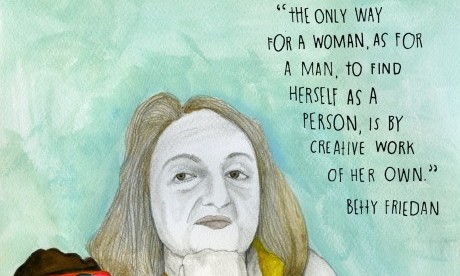In the introduction to the Tenth Anniversary Edition of The Feminine Mystique, Betty Friedan wrote, “It’s frightening when you’re starting on a new road that no one has been on before. You don’t know how far it’s going to take you until you look back and realize how far, how very far you’ve gone.”
Indeed. Forty years after that statement and fifty years after the publication of The Feminine Mystique, the road that Friedan embarked upon has led women to places they have never been before—entering the workforce and academia in ever-higher numbers, yes, but also historically low fertility rates, no-fault divorce, and abortion on demand. The emotional consequences for women have not been rosy. Stevenson and Wolfers report that, in spite of the fact that all objective measures of women’s happiness have risen, both women’s subjective well-being and their well-being relative to men have fallen since the 1970s. For the first time in the last 35 years, men report higher levels of happiness than do women.
Friedan’s diagnosis of “the problem that has no name”—women’s sense of purposelessness—was justified, but her prescriptions have been disastrous. The road that Betty Friedan and second-wave feminists paved has led women to lives new and unfamiliar, but not to a solution to the problem. In following the impact of feminism through three broad categories of the life cycle—education, child-bearing years, and the empty nest—we see that the promises of feminism have fallen flat, as women have bought into a feminist mystique that has left them more alone and conflicted in their pursuit of fulfillment than ever before.
Friedan oft laments what she calls the “sex-directed education” of women. Women, she discovered when interviewing college girls to write her book, embark upon higher education primarily to meet a man and cannot be bothered with academic pursuits. Continue reading
Sources
- The Family in America
- Image: tumblr
News category: Features.




